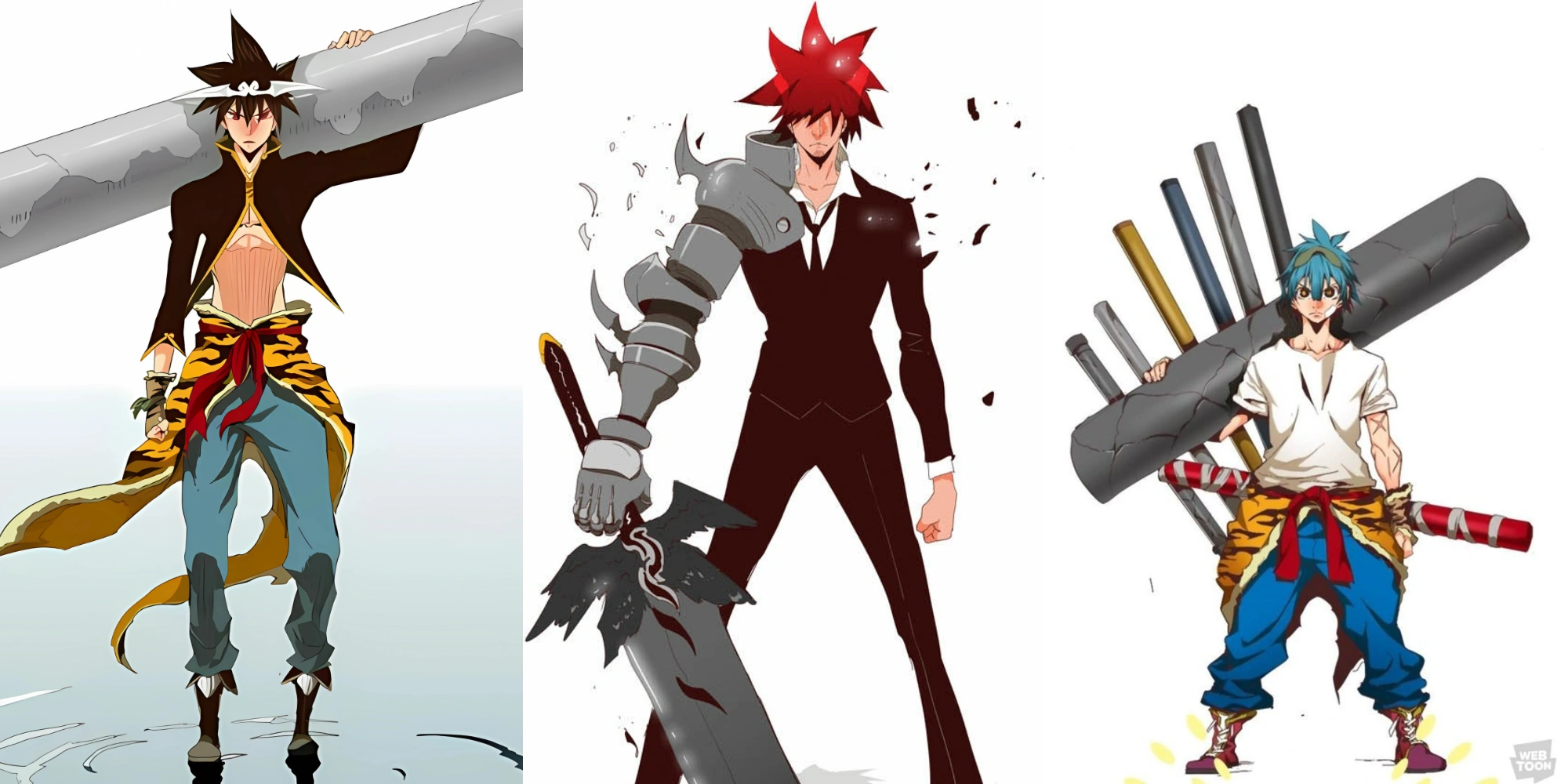The brutal tournament world of God of Highschool features three distinct sources of power: raw martial arts skill, divine borrowed power (Charyeok), and the mysterious artifacts known as National Treasures. Unlike standard weapons or even powerful Charyeok abilities, National Treasures are unique divine artifacts that often demonstrate will of their own, choosing their wielders and granting extraordinary capabilities.
What makes these weapons particularly fascinating is how they interact with a fighter’s existing abilities and borrowed power, creating synergies that can elevate combatants to god-tier levels. After analyzing their demonstrated abilities, feats, and impact on the story, here’s the definitive ranking of the most powerful National Treasure weapons in God of Highschool.
1. Robe of the Sage
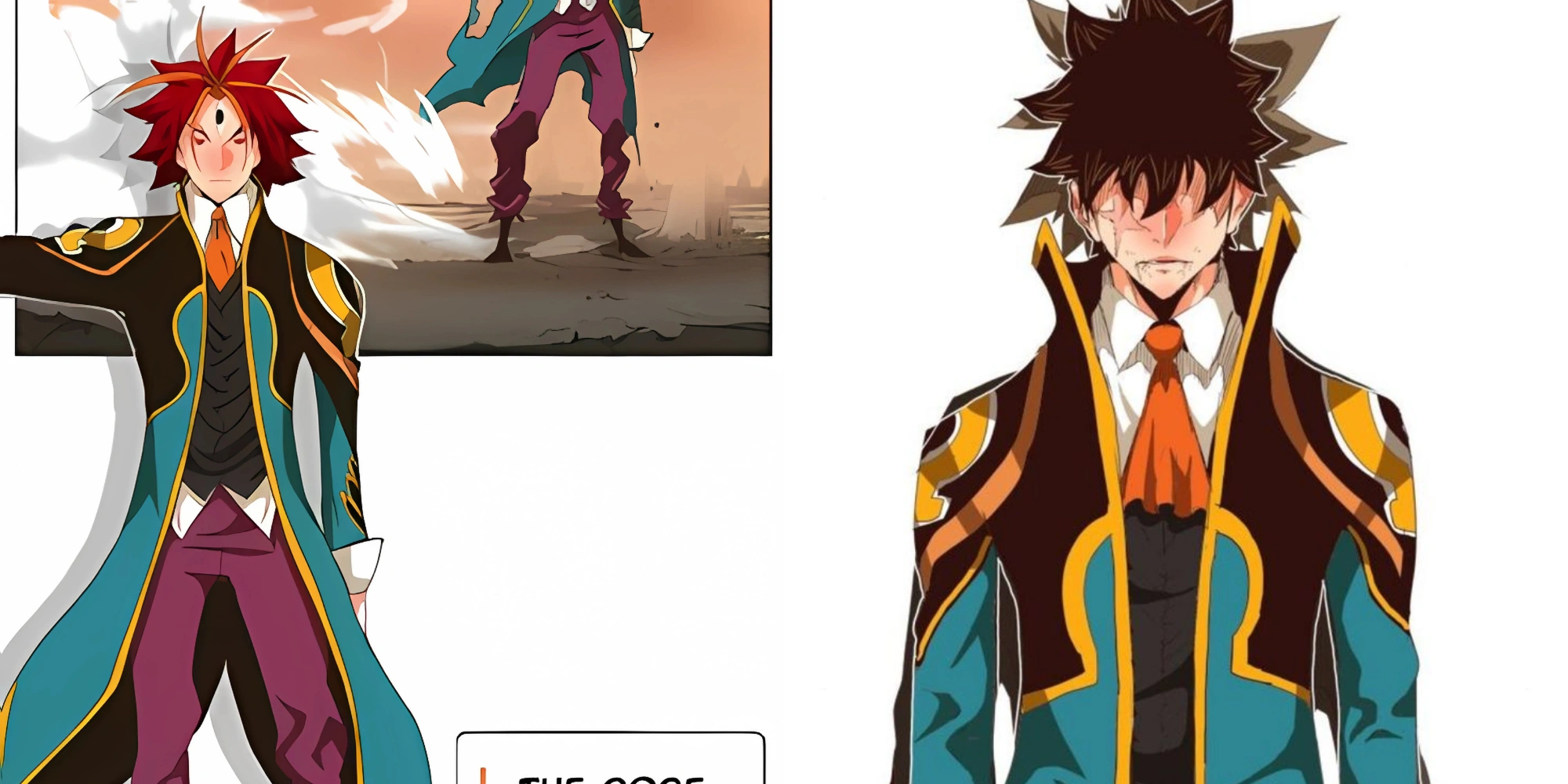
Originally owned by Okhwang (the Jade Emperor), the Robe of the Sage grants Han Daewi control over the four fundamental forces of the universe, allowing him to warp gravity, control atoms, and negate virtually any attack.
When discussing the most powerful National Treasures in God of Highschool, nothing comes close to the sheer reality-warping potential of the Robe of the Sage. Originally worn by Okhwang, the Jade Emperor himself, this artifact embodies the “Mind” of the Supreme God and grants its wearer control over the four fundamental forces of the universe.
After Okhwang’s defeat, Han Daewi inherits this artifact and ascends to become the new Jade Emperor. With the Robe, Daewi gains mastery over:
Gravity: He can create crushing forces, manipulate attraction and repulsion, distort space to redirect attacks, and even move celestial bodies at faster-than-light speeds (literally dragging Jupiter out of orbit).
Electromagnetism: Granting control over attraction, repulsion, and electromagnetic fields.
Strong Nuclear Force: Enabling devastating attacks through nuclear fission, generating temperatures in the millions of degrees.
Weak Nuclear Force: Allowing him to decay the bonds between particles, effectively destroying matter on a sub-atomic level.
Perhaps the Robe’s most incredible defensive ability is “Zero Friction,” which negates inertia and creates an absolute defense field. Incoming attacks, no matter how powerful, simply cannot reach the wearer. This god-tier defense, combined with its versatile offensive capabilities, makes the Robe the most formidable National Treasure shown in the series.
The synergy between the Robe and Han Daewi is particularly noteworthy. His naturally calm, tactical fighting style perfectly complements the precise control needed to wield fundamental forces. Using the Robe, Daewi casually defeated the entire Greek Pantheon and stood against top-tier threats like Mujin Park (as Tathagata).
2. Blade of Tathagata
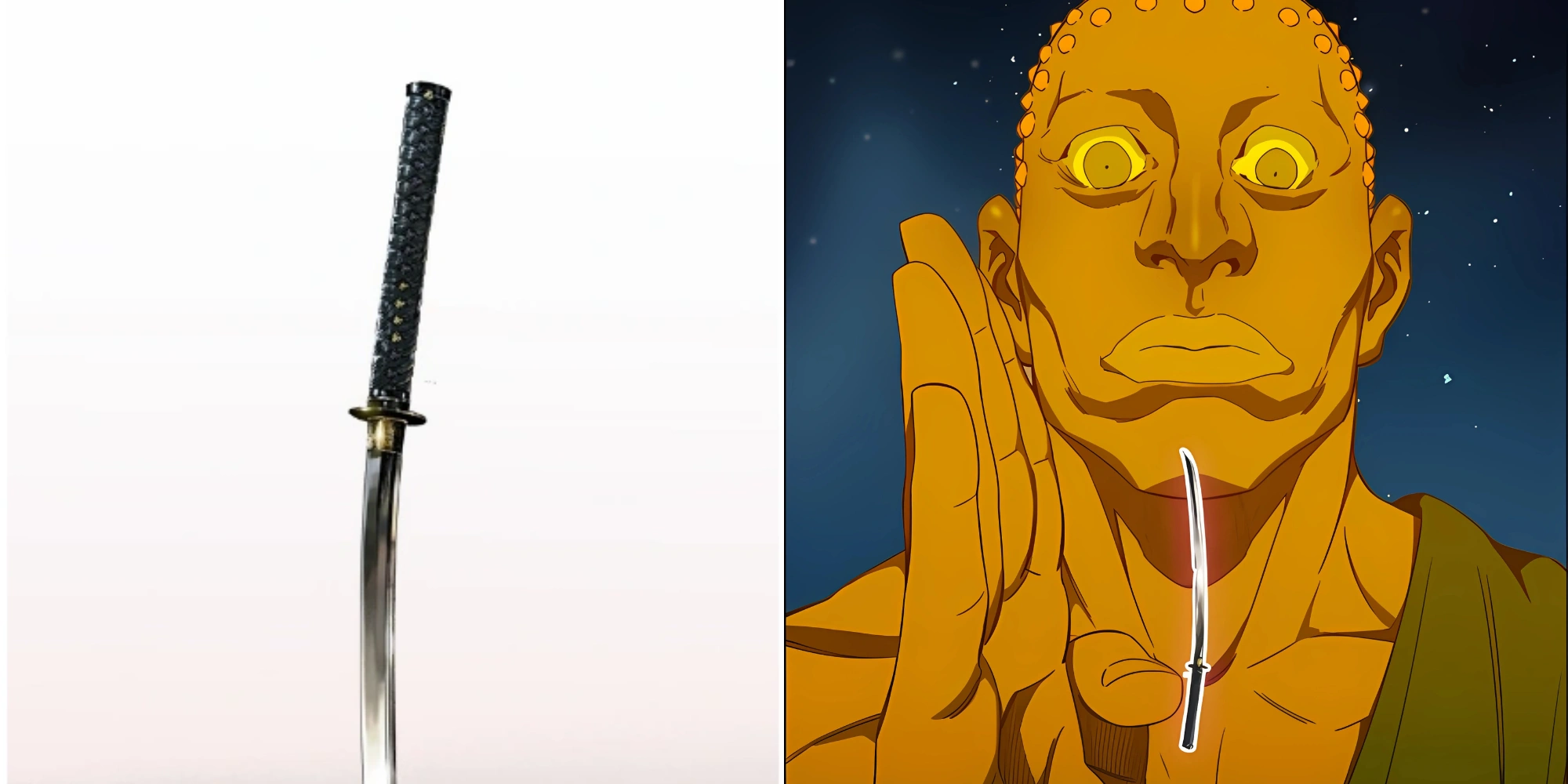
The Blade of Tathagata possesses the ultimate cutting power, capable of slicing through the supposedly impenetrable defenses of the Robe of the Sage, making it the perfect offensive counterpart to the number one weapon.
If the Robe of the Sage represents ultimate defense and control, the Blade of Tathagata embodies ultimate offense. This legendary sword was originally wielded by Okhwang before finding its way to Yoo Mira after the 17-year timeskip, when she inherited the “108 Agonies” collection as the new Weapon Master.
What makes the Blade of Tathagata exceptional is its seemingly absolute cutting power. Its feats include:
Okhwang merely unsheathing the sword caused devastation across Korea.
Yoo Mira wielded it to slice clean through Han Daewi’s attacks powered by the Four Fundamental Forces.
Most impressively, Mira managed to cut through the Robe of the Sage itself—a feat that should be impossible given the Robe’s “Zero Friction” absolute defense.
This final accomplishment is what secures the Blade’s position as the second most powerful National Treasure. The fact that it can penetrate a defense that negates all physical and energy attacks suggests the Blade operates on a higher conceptual level, perhaps “cutting” the very laws that underpin those defenses.
The name “Tathagata” (a title for Buddha representing enlightenment) implies an absoluteness to its strike. While not as versatile as the Robe, the Blade’s singular focus on transcendent cutting power makes it the perfect offensive counterpart to the top-ranked treasure.
3. Mujin Park’s Right Arm
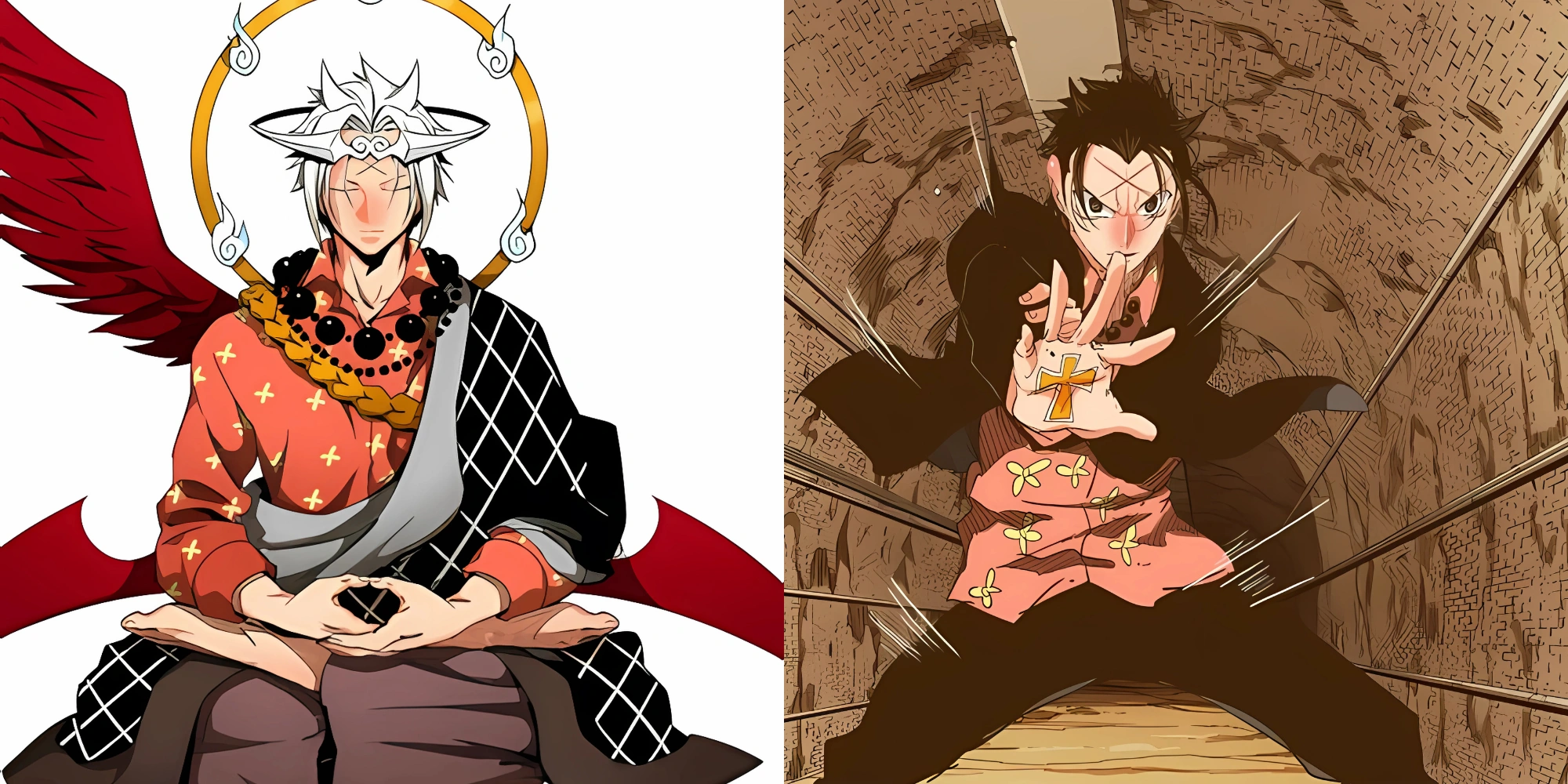
The severed right arm of Mujin Park grants its wielder the ‘Wi-Fi’ ability to tap into the borrowed powers of countless individuals across the planet, essentially turning the user into a conduit for millions of Charyeok abilities simultaneously.
In a universe where borrowed power plays a crucial role, Mujin Park’s severed right arm offers perhaps the most fascinating approach to harnessing this energy. This National Treasure, obtained by Yoo Mira during her battle against “Deer” (one of the Four Pillars of Fate), grants the unique ability dubbed “Wi-Fi.”
This power allows the wielder to establish a connection to the borrowed powers (Charyeok) residing within countless individuals across an immense radius—potentially spanning half the planet. By tapping into this network, the user can borrow and utilize these diverse powers simultaneously, acting as a conduit for the collective strength of potentially billions of borrowed power users.
What makes this treasure particularly potent is its unlimited scaling potential. The more borrowed power users in range, the stronger the wielder becomes. In theory, this could make the arm one of the most powerful artifacts in existence in densely populated areas.
The “Wi-Fi” ability represents a perfect borrowed power weapon synergy, as it doesn’t just enhance a single Charyeok but creates connections between innumerable divine abilities. However, this dependency on external power sources is also its main limitation, as it would be significantly less effective in isolated areas with few borrowed power users.
4. Cane of the Sage
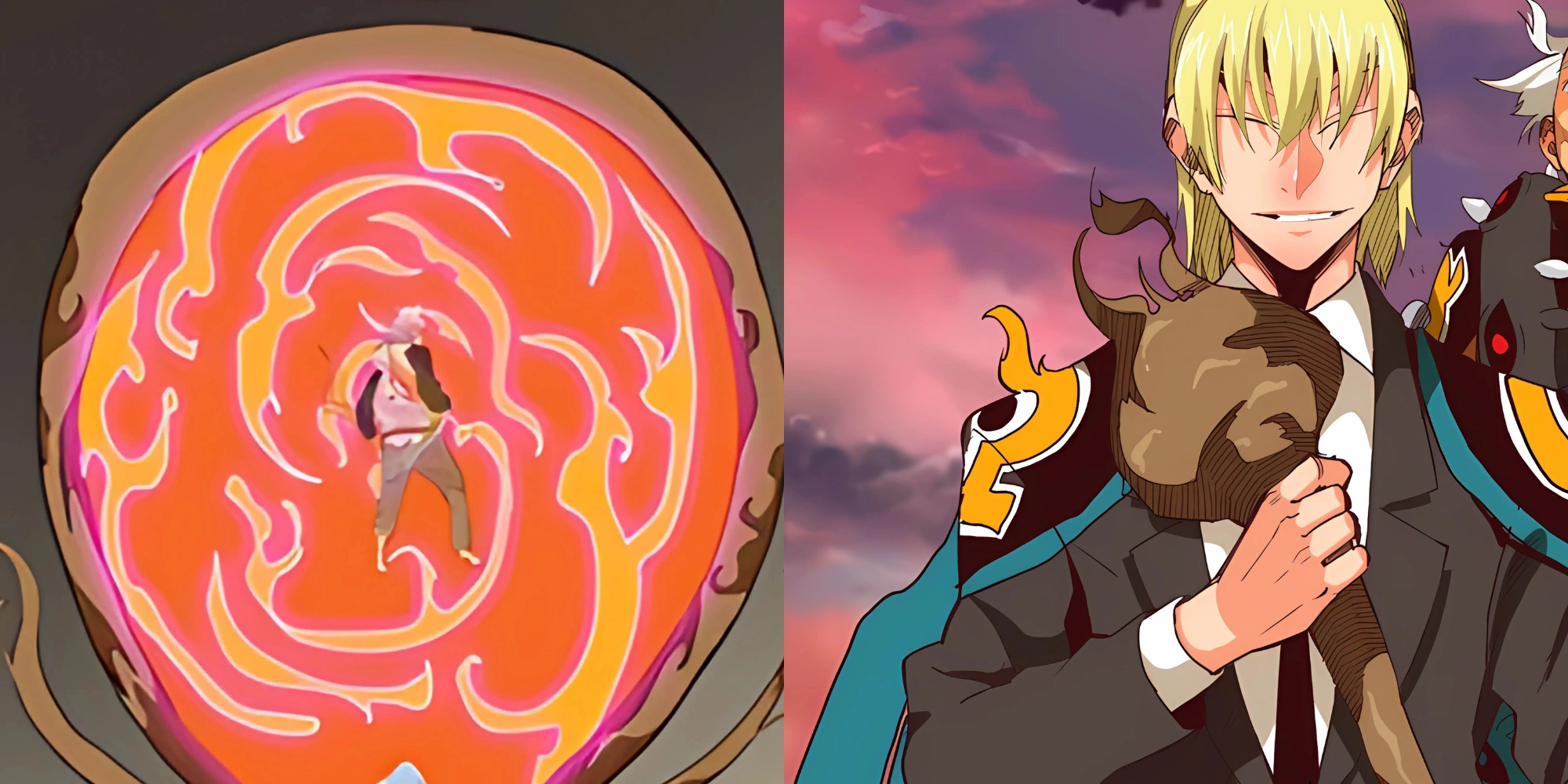
While not as directly destructive as other National Treasures, the Cane of the Sage grants unparalleled strategic advantages through interdimensional travel, battlefield removal, and even the ability to absorb souls.
The Cane of the Sage, an ornate staff wielded by Okhwang, represents the pinnacle of utility among National Treasures. While it may lack the raw destructive power of the Blade or the fundamental control of the Robe, its unique capabilities make it an exceptionally dangerous artifact.
The Cane’s primary abilities include:
Interdimensional/Space-Time Travel: It allows instantaneous movement between vastly different realms and dimensions, including those with entirely separate flows of time, such as the Human Realm and the Heavenly Realm.
Battlefield Removal (BFR): The travel capability can be weaponized to forcibly displace opponents, potentially banishing them to other dimensions or remote locations across the universe.
Soul/Life Force Absorption: Okhwang utilized the Cane to drain the life force or souls of others, storing this energy within associated “Energy Stones.”
In the context of God of Highschool’s borrowed power system, the Cane represents a type of strategic control that transcends direct combat. The ability to instantly remove threats from the battlefield or absorb their very essence offers victory conditions that bypass traditional power scaling. Against all but the most reality-warping opponents, the Cane provides options for immediate victory through displacement or power drainage.
Its perfect synergy with Okhwang’s role as ruler of multiple realms demonstrates how National Treasures often reflect their intended user’s nature and purpose, elevating it beyond a mere weapon to a symbol of divine authority.
5. Yoo Mira’s Initial Sword
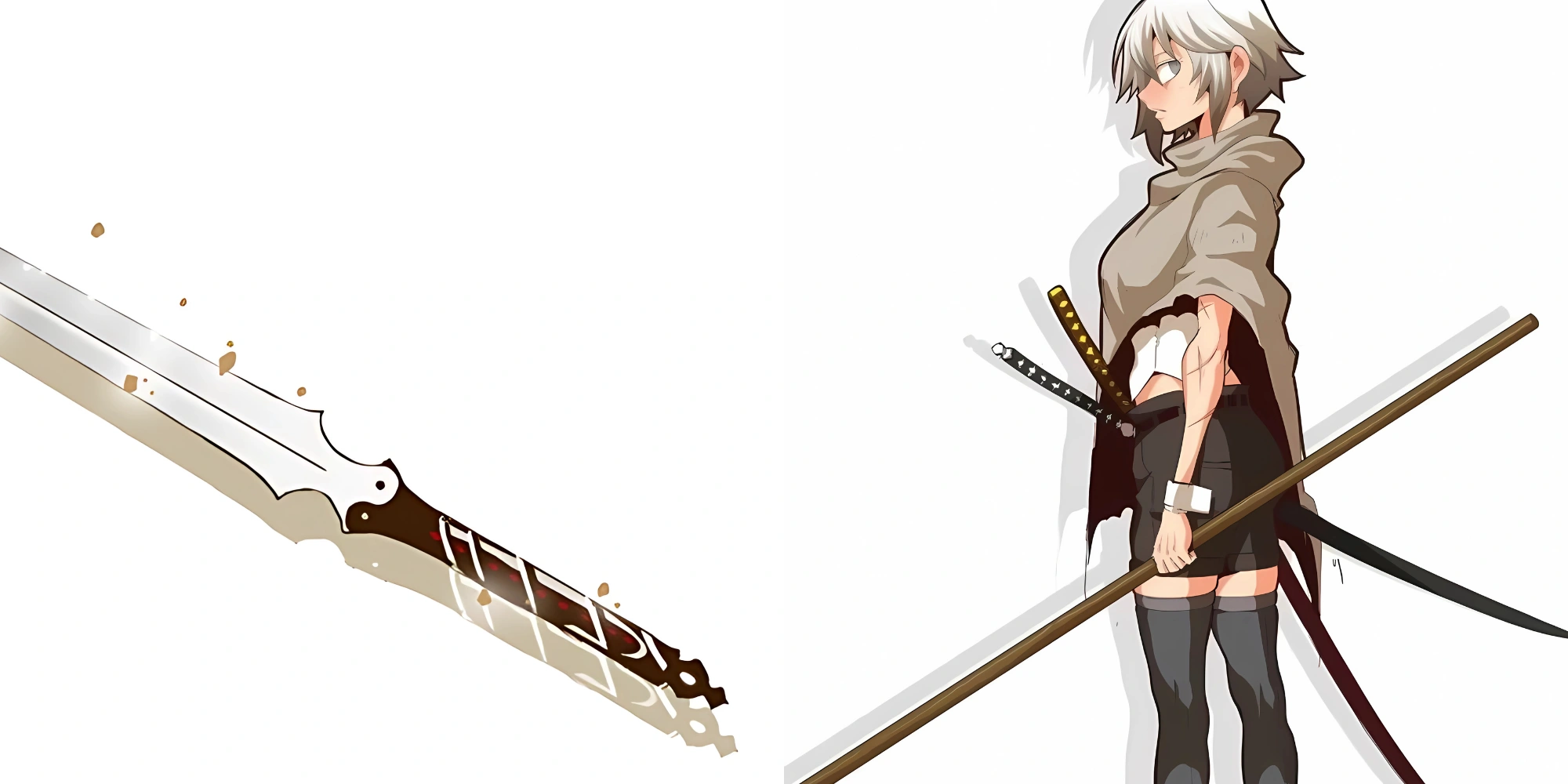
Though not as cosmically powerful as later National Treasures, Yoo Mira’s family sword represents the perfect synergy with her Moonlight Sword Style, amplifying her techniques to superhuman levels.
The first National Treasure introduced in the series, Yoo Mira’s inherited sword serves as our introduction to the concept. While significantly less powerful than the cosmic-tier artifacts that appear later, this weapon demonstrates the core principles that make National Treasures special: a deep connection to their wielder and the ability to amplify existing abilities beyond normal limits.
The sword is intrinsically linked to Yoo Mira’s family and the Moonlight Sword Style, passed down through generations with the mandate to preserve the style and find a suitable successor. Its primary function is to amplify the techniques and inherent power of this martial art, allowing Mira to exhibit extraordinary cutting power.
Even in its initial form (sometimes represented by a wooden bokken), it enabled Mira to slice through durable metallic cards as a child. As she matured, the sword allowed her to generate slashes of pure air pressure capable of damaging opponents and creating small craters.
What stands out about this National Treasure is the perfect borrowed power weapon synergy it demonstrates with Mira’s fighting style. Unlike the cosmic abilities granted by higher-ranked treasures, Mira’s sword enhances what she already knows and does, making her exceptionally dangerous within the scope of human-level combat during the early God of Highschool tournament.
The sword’s true significance lies in how it establishes the concept of National Treasures as extensions of their wielders rather than just powerful tools. It shows that the relationship between fighter and treasure is as important as the artifact’s inherent power.
Special Mention: Ruyi Jingu Bang (Yeoui)
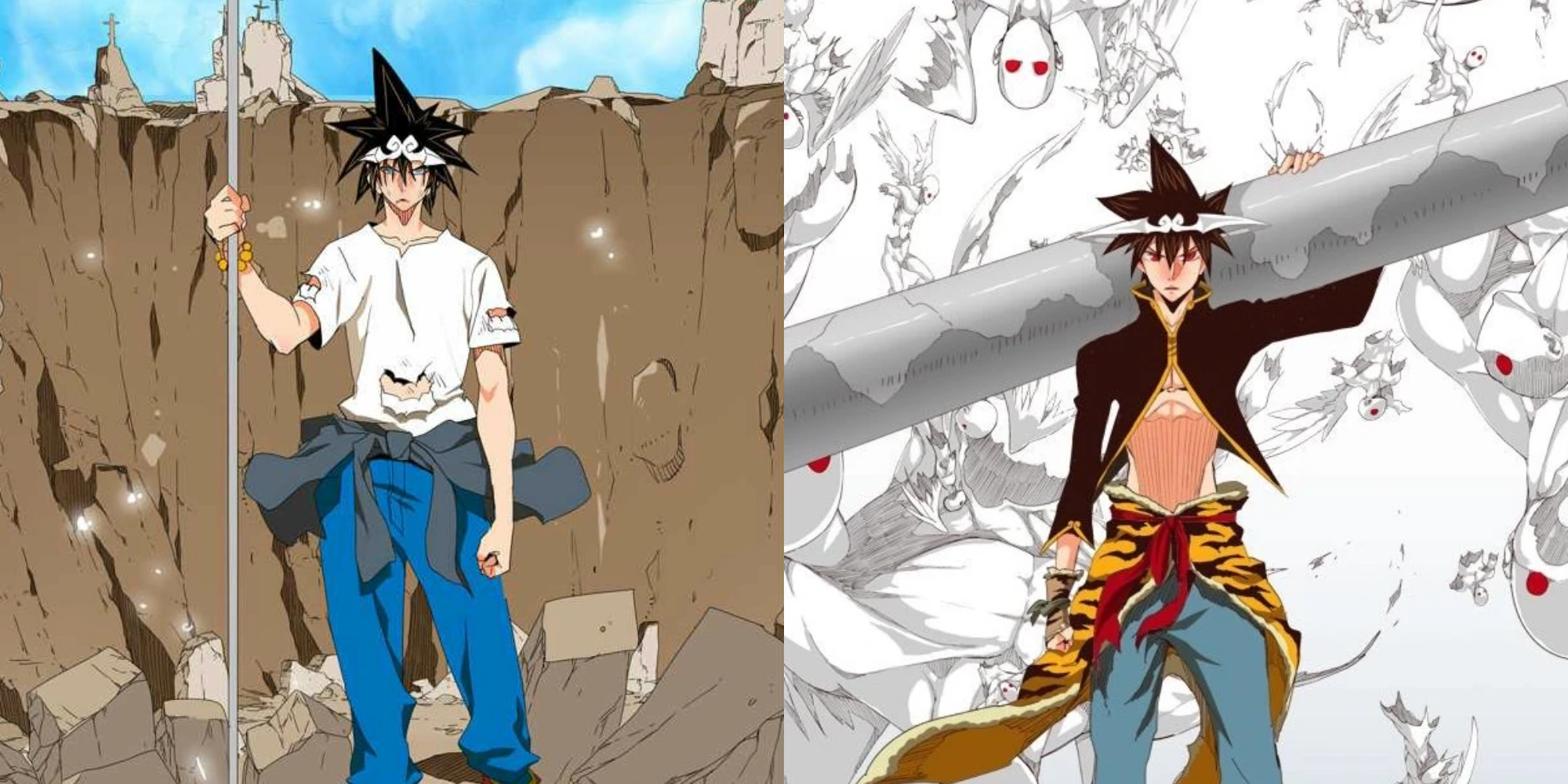
While technically not a National Treasure but part of Jin Mori’s identity as Sun Wukong, the Ruyi Jingu Bang (Yeoui) is one of the most iconic and versatile divine weapons in the series.
While not technically qualifying as a National Treasure under the strict definition (as it’s intrinsically linked to Jin Mori’s identity as Sun Wukong rather than being an external artifact that chooses its wielder), the Ruyi Jingu Bang (also known as Yeoui or Bong-Seon) deserves special mention due to its incredible power and significance in the series.
This divine staff, weighing approximately 7,960 tons and capable of extending to extraordinary lengths, demonstrates capabilities that rival or exceed some National Treasures:
Size Manipulation: Yeoui can extend to reach the heavens or shrink to the size of a needle at the wielder’s command.
Weight Manipulation: While already immensely heavy, Yeoui’s weight can be further increased to crush opponents.
Sentience: The staff demonstrates a will of its own, sometimes acting independently to protect Jin Mori.
Durability: Yeoui withstands attacks from god-tier entities and can clash with legitimate National Treasures without breaking.
The Yeoui weapon abilities are particularly impressive when Jin Mori fully awakens as the Monkey King, at which point the staff becomes an extension of his divine power rather than just a weapon. In this state, Yeoui’s destructive potential rivals even the highest-ranked National Treasures.
What makes Ruyi Jingu Bang unique among divine weapons in God of Highschool is that it represents the clearest bridge between borrowed power and National Treasures. Unlike conventional Charyeok that merely channel a divine entity’s power, Yeoui is a physical artifact from the divine realm itself, making it one of the strongest holy relics in GOH even without the formal National Treasure designation.
God of Highschool National Treasures FAQ
What's the difference between National Treasures and Borrowed Power in God of Highschool?
National Treasures and Borrowed Power (Charyeok) represent fundamentally different approaches to harnessing supernatural abilities in God of Highschool:
Borrowed Power (Charyeok) is essentially a contract between a human and a supernatural entity. The user channels the power of gods, demons, spirits, or mythological figures, manifesting abilities based on that entity’s domain. For example, someone with Zeus’s Charyeok gains lightning powers, while someone with Heracles’s power gains superhuman strength. The key aspect is that the power comes from within through this spiritual contract.
National Treasures, on the other hand, are external divine artifacts with their own innate power. They often possess sentience or will, choosing their wielders rather than being controlled through contracts. National Treasures grant specific abilities based on their nature and history, such as the Robe of the Sage allowing control over fundamental forces or the Blade of Tathagata’s absolute cutting power.
The most interesting interactions occur when a fighter combines both systems. A martial artist with a powerful Borrowed Power who also wields a compatible National Treasure can achieve exponentially greater abilities through synergy between these power sources. This is seen when Yoo Mira combines her sword techniques, Borrowed Power, and later National Treasures to reach god-tier fighting capability.
Some artifacts like Jin Mori’s Ruyi Jingu Bang (Yeoui) blur the lines between these categories. While technically part of his inherent power as Sun Wukong rather than a separate National Treasure, it functions similarly to one in granting external, object-based powers beyond what typical Borrowed Power users can achieve.
Why is the Robe of the Sage considered more powerful than the Blade of Tathagata?
While the Blade of Tathagata demonstrates the ability to cut through the Robe of the Sage’s defenses (an incredible feat), the Robe is still ranked higher for several key reasons:
First, the Robe offers unparalleled versatility. Control over the Four Fundamental Forces (Gravity, Electromagnetism, Strong Nuclear Force, and Weak Nuclear Force) grants an almost limitless arsenal of offensive, defensive, and utility abilities. The wielder can create crushing gravity fields, manipulate matter at the subatomic level, generate nuclear reactions, distort space itself, and even move celestial bodies like Jupiter.
Second, while the Blade can penetrate the Robe’s “Zero Friction” defense, this represents a specialized counter rather than overall superiority. The Robe still offers more comprehensive protection against virtually all other attacks in the God of Highschool universe.
Third, the Robe represents the “Mind” of the Jade Emperor, granting conceptual authority over the laws of physics themselves. This places it on a higher cosmic tier than most other artifacts.
Fourth, the strategic applications of the Robe far exceed the Blade’s primarily offensive focus. A Robe wielder can control the environment, manipulate forces at a distance, and achieve victory without direct confrontation if desired.
The relationship between these artifacts actually mirrors the classic “perfect offense vs. perfect defense” paradox. The Blade’s ability to cut through the Robe’s defenses makes it the perfect counter, but the Robe’s vastly superior range of applications and fundamental control over reality gives it the edge in overall power ranking.
How do the Ruyi Jingu Bang's abilities compare to National Treasures?
The Ruyi Jingu Bang (Yeoui) occupies a unique position in God of Highschool’s power hierarchy. While not technically a National Treasure, its capabilities rival or even exceed some legitimate National Treasures in several ways:
In terms of raw destructive potential, fully unleashed Yeoui in the hands of awakened Jin Mori (as Sun Wukong) demonstrates continental-level damage output. Its 7,960-ton weight combined with its ability to extend and strike with godly force makes it comparable to the offensive output of treasures like the Blade of Tathagata.
What truly sets Yeoui apart is its versatility. Unlike most National Treasures with fixed abilities, Yeoui adapts to Jin Mori’s fighting style and intentions. It can function as a staff for direct combat, extend to pierce distant targets, expand to create area-of-effect attacks, or even serve defensive purposes.
Yeoui also demonstrates sentience similar to National Treasures, sometimes acting independently to protect Jin Mori or respond to threats. This suggests a level of divine consciousness comparable to true National Treasures.
The key distinction remains that Yeoui is an intrinsic part of Jin Mori’s identity as Sun Wukong rather than an external artifact that chose him. It’s better understood as an extension of his divine self than a separate treasure. This actually gives it advantages in some ways, as it’s more perfectly attuned to his needs and abilities than separately obtained treasures might be.
Ultimately, Yeoui represents one of the most powerful divine weapons in the series regardless of classification, capable of going toe-to-toe with legitimate National Treasures in the hands of its rightful owner.
What makes borrowed power weapon synergy important in God of Highschool?
Borrowed power weapon synergy is one of the most critical factors in determining a fighter’s effectiveness in God of Highschool, often making the difference between victory and defeat regardless of raw power levels. Here’s why it matters so much:
First, complementary abilities create multiplicative rather than additive power increases. A fighter whose borrowed power enhances the same attributes as their weapon can achieve exponentially greater effects. For example, Yoo Mira’s sword techniques, when combined with compatible borrowed power and later National Treasures, became far more devastating than these elements would be individually.
Second, synergistic combinations can compensate for inherent weaknesses. A fighter whose borrowed power lacks defensive capabilities might wield a National Treasure with strong protective elements, creating a more balanced combat profile than either power source alone would provide.
Third, certain borrowed powers specifically enhance weapons or artifacts. Some Charyeok abilities directly increase the potency of physical items, making National Treasures even more formidable when paired with the right borrowed power.
Fourth, psychological and stylistic compatibility matters. A fighter achieves peak performance when their borrowed power, weapon, and personal fighting style align conceptually. This harmony allows for more intuitive use of abilities and often unlocks hidden potential.
The ultimate example of borrowed power weapon synergy is Mujin Park’s Right Arm with its “Wi-Fi” ability. This National Treasure doesn’t just work alongside borrowed power—it directly connects to and channels multiple borrowed powers simultaneously, representing perfect integration between these power systems.
The fighters who rise to the top in God of Highschool are typically those who understand and maximize these synergies rather than simply wielding the objectively strongest individual powers.
Are there other National Treasures not mentioned in this ranking?
While this ranking covers the most prominent and well-defined National Treasures in God of Highschool, the series does reference or briefly show other divine artifacts that could potentially qualify as National Treasures. These include:
The 108 Agonies - A collection of mythical weapons inherited by Yoo Mira when she became one of “The Six” and the new Weapon Master. The Blade of Tathagata was among these weapons, suggesting that some or all of the others might also qualify as National Treasures, though they aren’t individually named or showcased to the same extent.
Various weapons wielded by the Gods make brief appearances throughout the series. While not explicitly labeled as National Treasures, their divine nature and unique properties suggest they might exist in the same category or a parallel classification.
Items referenced in historical or mythological contexts within the God of Highschool universe sometimes bear similarities to National Treasures. These artifacts are mentioned in passing but rarely shown in action or explicitly confirmed as National Treasures.
Fan discussions sometimes include weapons like Gae Bolg or Balmung in speculative talks about National Treasures, but these items aren’t canonically established as such within the main narrative of God of Highschool.
It’s worth noting that the series sometimes blurs the lines between different categories of divine items. The distinction between National Treasures, divine weapons associated with specific gods, and artifacts empowered by borrowed power isn’t always clearly delineated, leading to some ambiguity in classification.
